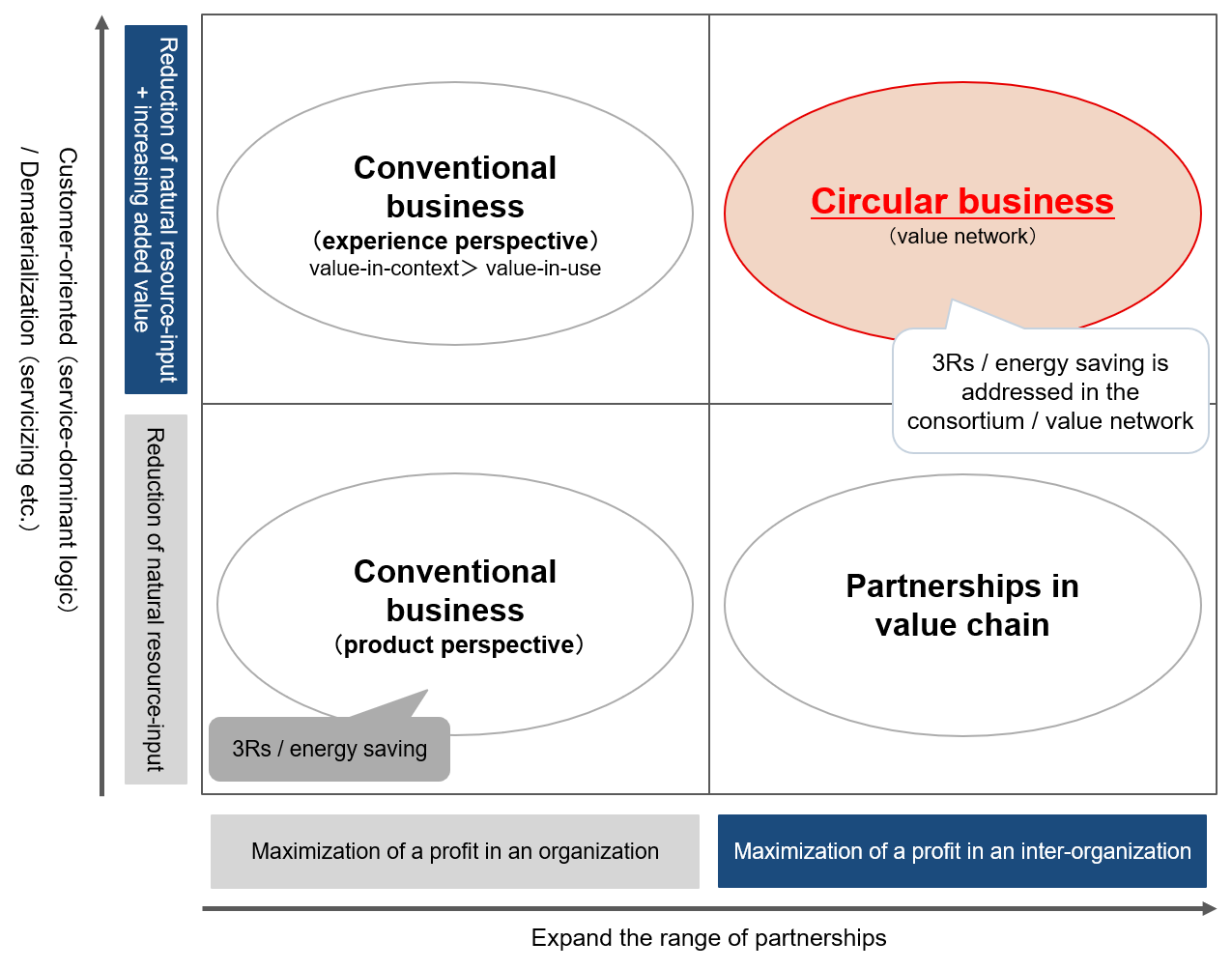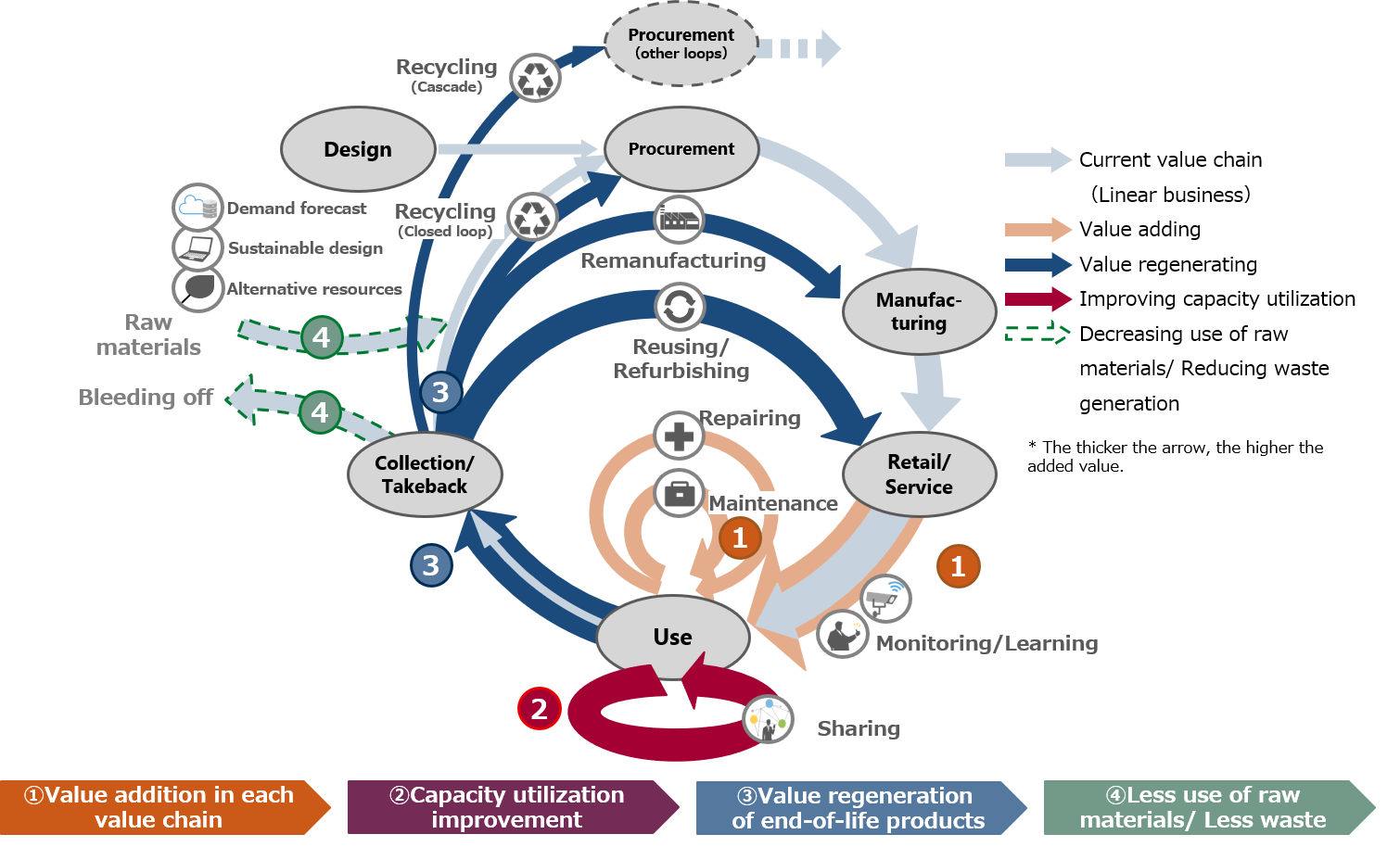What is a circular economy?
About the Circular Economy
The circular economy is an economic system that keeps regenerating or adding to the value of resources (including products and parts) while maintaining circulation. The circular economy can be understood as an opposite concept from a linear economy based on mass production and disposal. The circular economy contributes to sustainable economic development with smart use and solid market support.
About the Circular Business
The circular business creates more added value from limited resources (including products and parts) through multidisciplinary collaboration among interlinked value chains and interested parties. The business further promotes the conventional 3R (reduce, reuse, recycle) initiatives and creates new value-in-context. The establishment of the circular economy business in society contributes to the achievement of the circular economy.
< Difference between conventional business and the circular business >

There are many academic studies of the circular economy business. Generally, the circular economy business consists of the following four approaches that go beyond the merely conventional 3R (redude, reuse, recycle) initiatives.
- Value addition in each value chain
- Capacity utilization improvement
- Value regeneration of end-of-life products
- Less use of raw materials/ Less waste
< General and inclusive framework for circular business >

Circular business can improve the circularity of resource flows and enable sustainable development by increasing profit and reducing resource-related costs.
